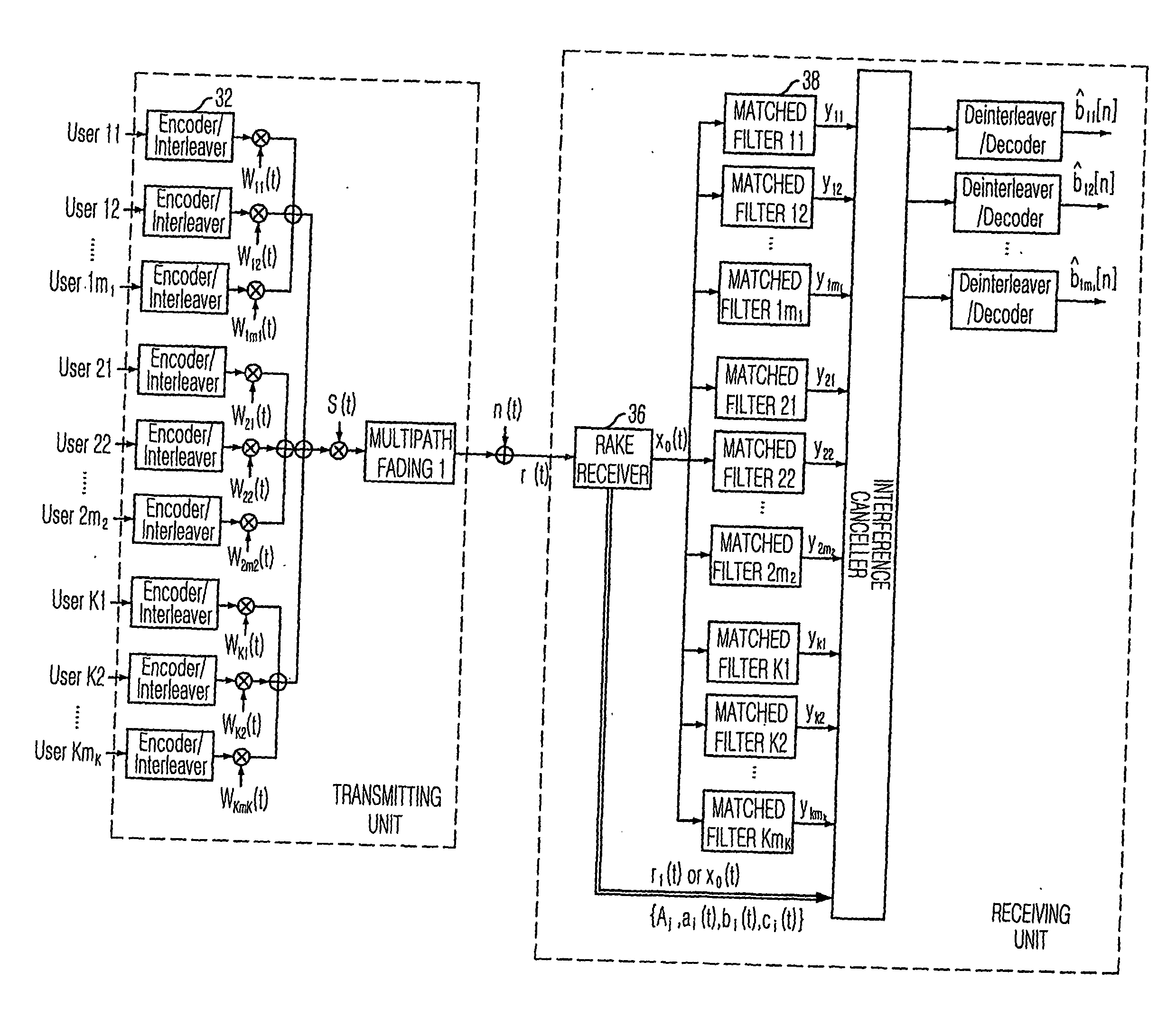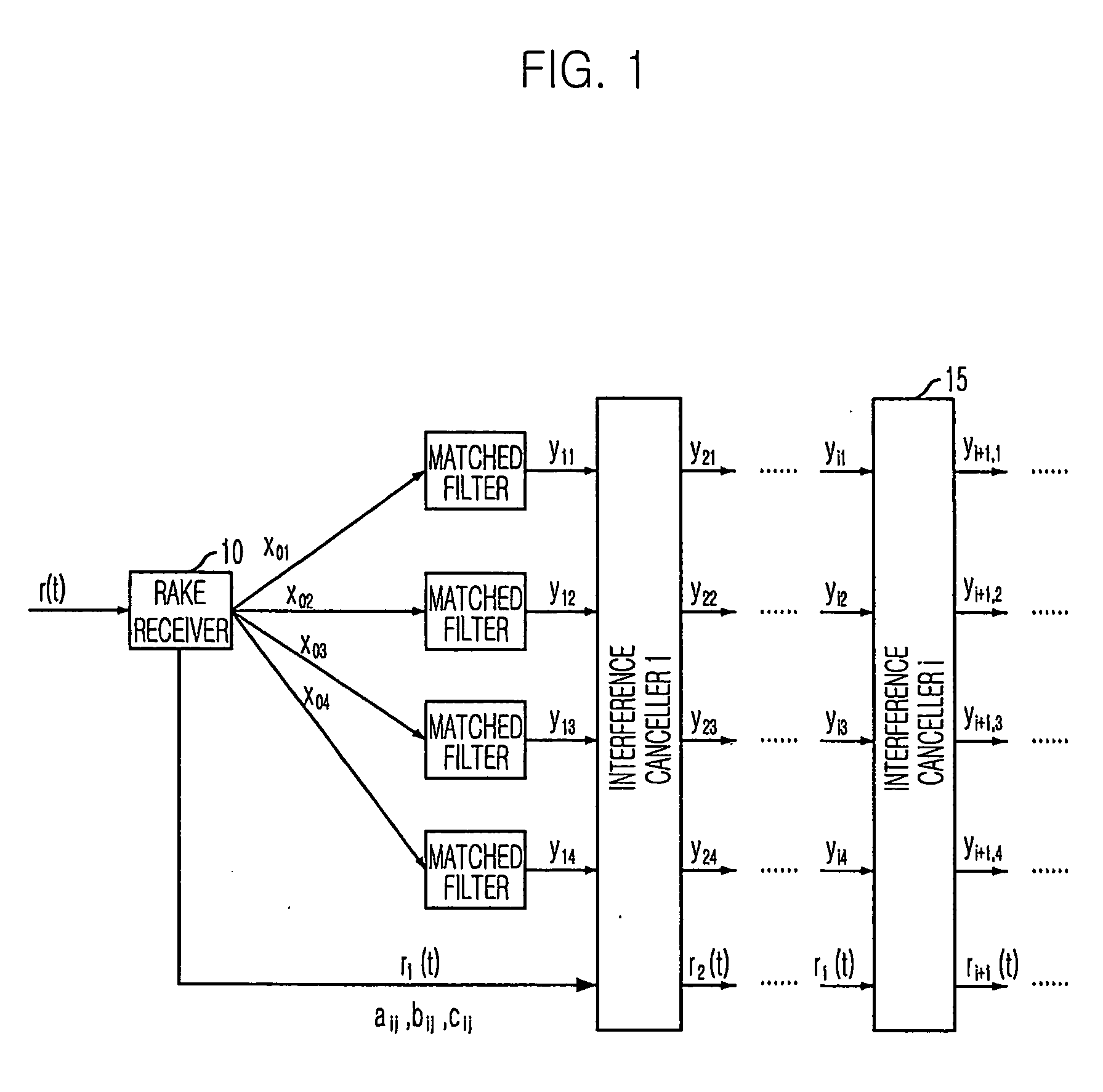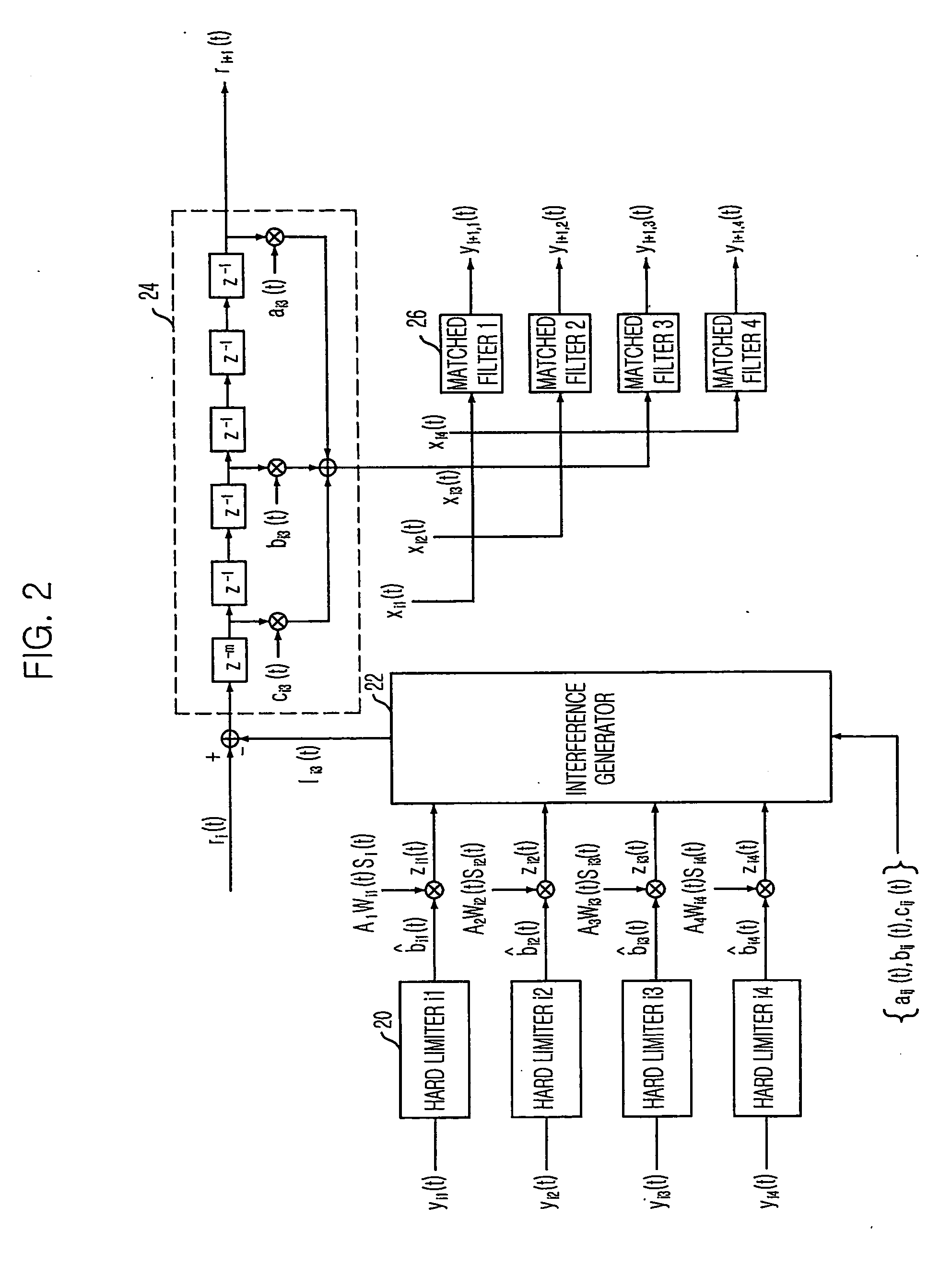Multistage adaptive parallel interference canceller
a canceller and multi-user technology, applied in multiplex communication, electrical equipment, transmission, etc., can solve the problems of complex multi-user detection (mud) design, low data rate channel performance degradation, and complex rake receiver interference for high data rate channels, so as to reduce circuit complexity and minimize orthogonality degradation
- Summary
- Abstract
- Description
- Claims
- Application Information
AI Technical Summary
Benefits of technology
Problems solved by technology
Method used
Image
Examples
Embodiment Construction
[0047] Other objects and aspects of the invention will become apparent from the following description of the embodiments with reference to the accompanying drawings, which is set forth hereinafter.
[0048] A preferred embodiment of the present invention is explained in details by dividing the embodiment into a downlink and an uplink. Hereinafter, i denotes an ith interference canceller and j denotes a jth channel in order to describe a certain signal as Xij.
[0049]
[0050]FIG. 3 is a block diagram showing a multistage adaptive partial parallel interference canceller (PIC) for removing an interference signal at a downlink in accordance with a preferred embodiment of the present invention.
[0051] Referring to FIG. 3, K users are using their terminals and each terminal has mk channels having different data rates. Data of each channel to be transmitted by the a base station are encoded and interleaved by an encoder / interleaver 32, and multiplied by a Walsh code Wk(t) to separate different ...
PUM
 Login to View More
Login to View More Abstract
Description
Claims
Application Information
 Login to View More
Login to View More - R&D
- Intellectual Property
- Life Sciences
- Materials
- Tech Scout
- Unparalleled Data Quality
- Higher Quality Content
- 60% Fewer Hallucinations
Browse by: Latest US Patents, China's latest patents, Technical Efficacy Thesaurus, Application Domain, Technology Topic, Popular Technical Reports.
© 2025 PatSnap. All rights reserved.Legal|Privacy policy|Modern Slavery Act Transparency Statement|Sitemap|About US| Contact US: help@patsnap.com



